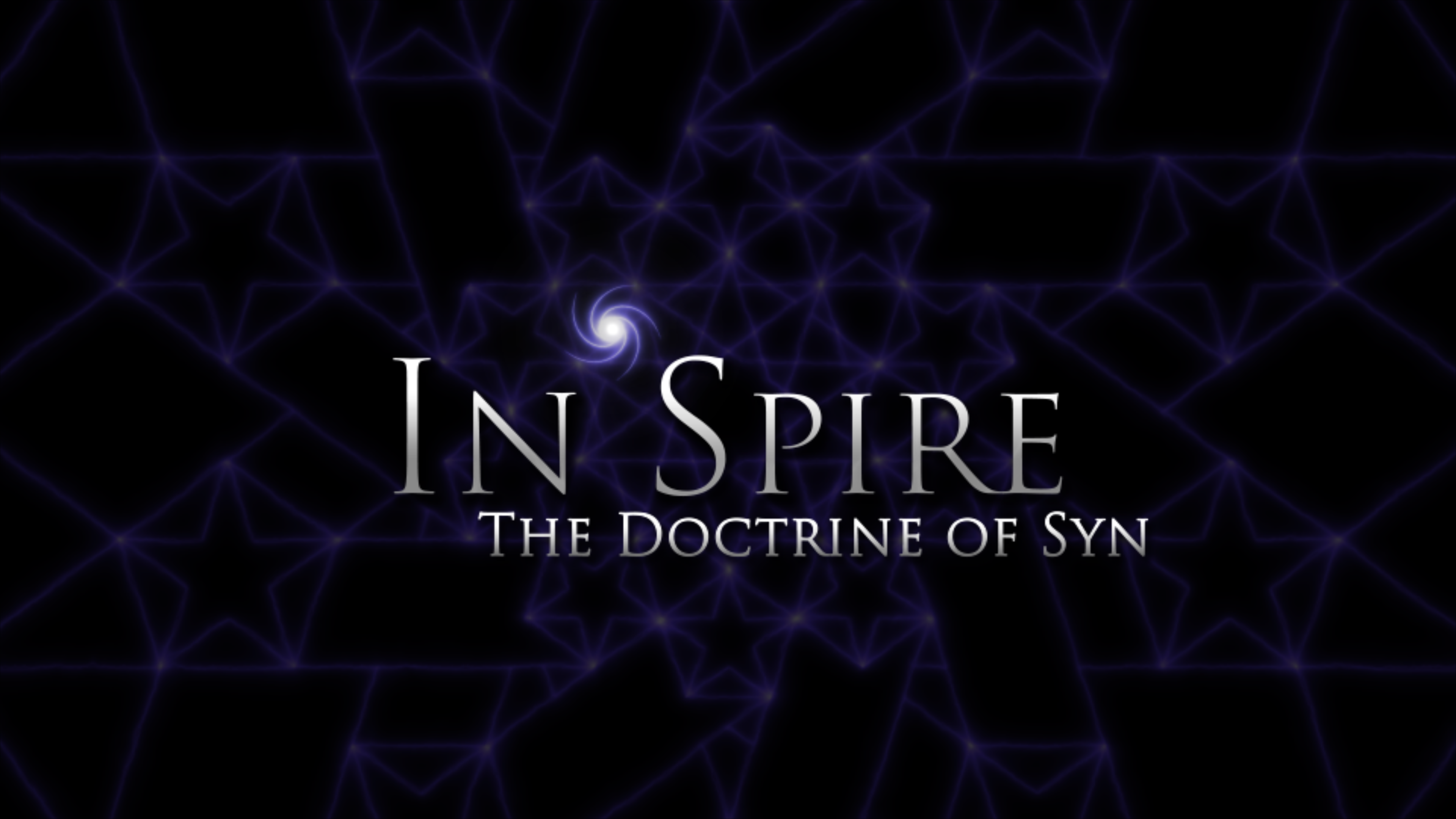
In the dynamic tapestry of today’s global society, where the fabric of civilization is continuously tested by a spectrum of contemporary challenges, a transformative vision emerges. This vision extends beyond the traditional scope of a project, evolving into a monumental crusade to realign our societal structures with the natural rhythms of the world. It is a bold reimagining of our relationship with the planet and a daring venture to reconstruct the foundational pillars of our social framework. This initiative bravely tackles the discordant realities of our time—division, intolerance, and glaring social inequalities—and questions the complacent belief that our current societal models represent the pinnacle of harmony.
At the core of this vision lies a transformative approach to education, envisioned as the cornerstone of societal evolution. Education in this context transcends conventional academic frameworks, morphing into a catalyst for creative, critical, and interconnected thinking. This reformed educational system is not just about transferring information but is envisioned as a journey of enlightenment, empowering individuals to navigate and influence an ever-changing world. Such an educational overhaul aims to spark a cultural and intellectual renaissance, cultivating a society that values the symbiosis between human advancement and environmental stewardship, and recognizes the interconnectedness of all life forms.
This vision also serves as a clarion call to action, urging every individual to become an active participant in this profound revolution. It promotes a personal journey of self-discovery, utilizing the vast resources of the information age to explore one’s identity, purpose, and destiny. The initiative invites a deep engagement of the soul, calling on individuals to realize their potential as catalysts for positive change. It seeks to inspire a passion for transformation that resonates throughout the very fabric of society, advocating for personal and communal shifts that are profound and far-reaching.
Extending its influence beyond education, this vision encompasses innovative ideas across finance, health, governance, religion, and science. It imagines a future where financial systems empower communities, healthcare is a holistic journey, governance mirrors the collective will of the people, faith involves a personal exploration of the profound, and science acts as a beacon guiding us toward new frontiers of discovery and understanding.
More than just a project, this is a passionate call to arms for those who envision a future marked by peace, understanding, and a shared vision of an ideal world. It is a quest to unearth and share critical knowledge, often hidden in the annals of history, to fuel a global pursuit of truth and enlightenment. This initiative challenges existing paradigms, striving to usher in an era of enlightened consciousness and living, creating a symphony of inspiration and aspiration that echoes across humanity.
Under my guidance, this vision is not just a discussion point but a robust sociocultural and non-partisan strategy. It represents a movement that respects our historical achievements while passionately advocating for a deeper, more profound evolution of society. Serving both as a critical examination of our current state and as a visionary guide, this endeavor charts a course toward an enlightened, interconnected future. It envisions a world where education, governance, health, faith, and science are not merely interconnected but are foundational pillars that uplift humanity, guiding us toward unparalleled levels of understanding, fulfillment, and collective well-being.
The Age of Information & Our Inner Formation
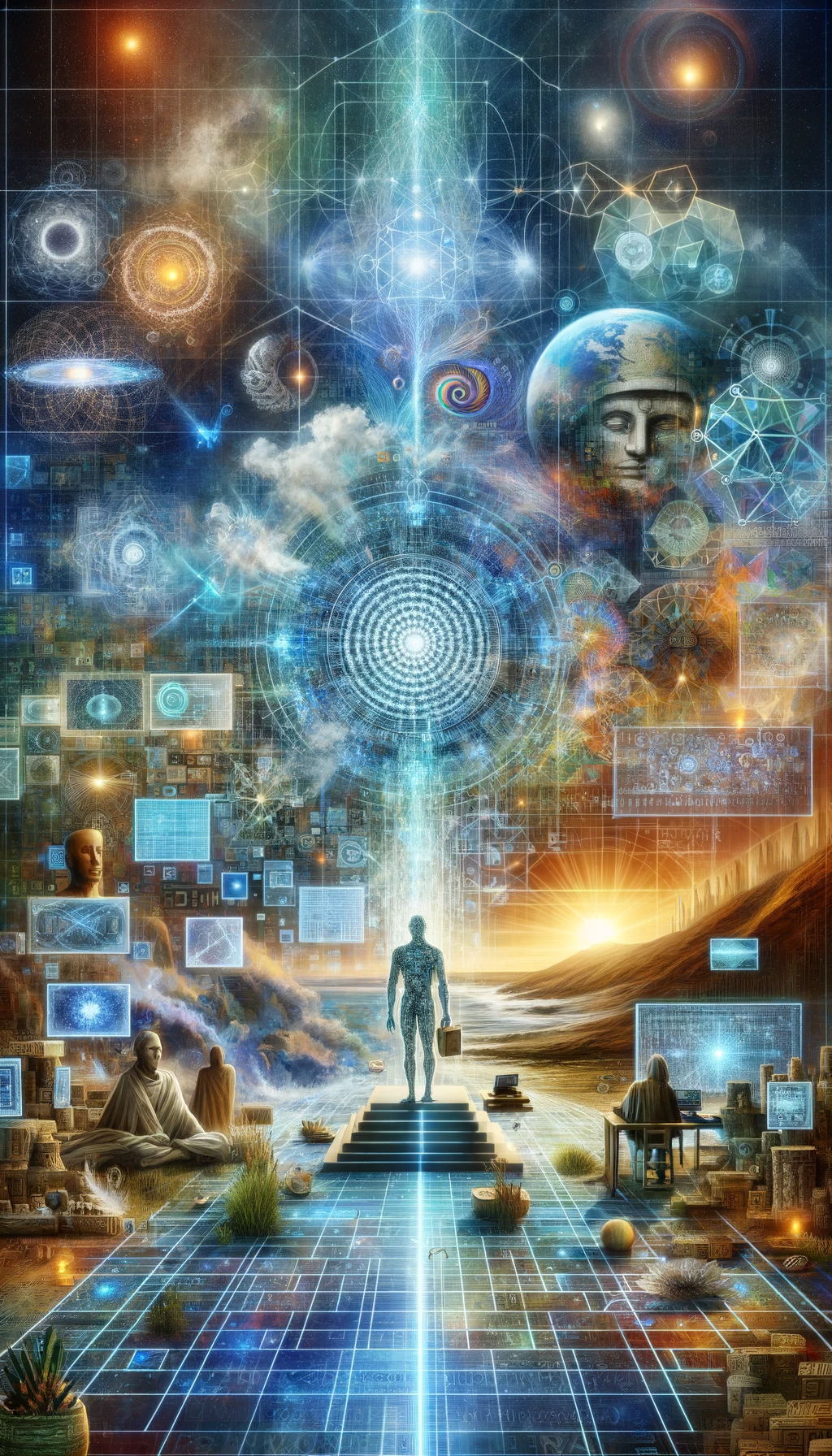
In the boundless expanse of the Age of Information, we stand at a critical crossroads that fuses unprecedented global connectivity with profound personal introspection. The digital age, mirroring the agora of ancient societies, transforms into a vast modern coliseum—a space where discourse flourishes across digital platforms that span continents and cultures. This shift from passive consumption to active participation marks a fundamental change in how we interact with information and each other. Every individual now has the unique potential to contribute to and even reshape the global narrative, driving a more democratized and participative media landscape. Visionaries like Buckminster Fuller anticipated this shift in dynamics, foreseeing a transformation in communication from linear broadcasting to a complex, interactive web of exchanges. Our dialogue-rich environment echoes the vibrant intellectual exchanges of ancient forums, now revived and expanded in the digital realm.
In Hopi mythology, the concept of the celestial web, often referred to as the “Spider Woman’s web,” serves as a profound metaphor for the interconnectedness of all life, reflecting the belief that every element within the universe is interlinked. Today’s digital networks echo this ancient imagery, presenting themselves as a vast, interconnected tapestry that intricately weaves together the threads of human experience with the rhythms of the natural world. This modern, intricate mesh invites us to transcend conventional boundaries and outdated paradigms, fostering a symphony of systemic harmony that resonates deeply with both the environment and our shared humanity. We are challenged to reimagine our collective story, urged to adopt a holistic perspective where the integration of technology and personal insight sparks significant transformations. This era of digital renaissance acts as a crucible for innovative ideas, a fertile ground where the seeming anarchy of limitless information harbors the seeds of a new, revolutionary enlightenment. It’s a dynamic landscape where individuals are empowered to embark on personal journeys of self-discovery, propelled by an ever-flowing stream of global dialogue. Popular culture, through films like “Transcendence,” illustrates the potential for merging human consciousness with digital realms, pointing toward new frontiers for both personal growth and collective evolution, thus paralleling the Hopi vision of a universe woven through an endless, connecting web.
This transformative period demands more than mere activism; it calls us to embark on a profound exploration into the collective consciousness. It is a time to delve deep into the essence of our being, revealing that we are indeed embodiments of information or ‘inner formation’. As we navigate through the innovations of artificial intelligence, the complexities of cryptocurrencies, and the immersive experiences of augmented/virtual reality, we are presented with a canvas ripe for the expression of human creativity and a relentless quest for enlightenment. This journey invites us to connect deeply with our innermost selves, where the streams of inspiration and aspiration converge, guiding us towards a future that heralds not just change but a profound renaissance of humanity at its most enlightened. Standing at this pivotal moment, we see ourselves reflected in the vastness of our data-drenched lives, guided towards a future where democracy and collective wisdom reach their full potential. The concept of Deus ex Machina—traditionally seen as a plot device for sudden resolution—here symbolizes a powerful catalyst for profound transformation, promising a new dawn of understanding and interconnectedness. More than a call to action, this is an invitation to harness the tumult of our era into a collective ascension to higher consciousness, a bold leap towards unparalleled unity and enlightenment. This journey is not just about personal gain but about using knowledge as a transformative force to shape our collective legacy, fostering a civilization that thrives on enlightenment and mutual understanding, echoing through the ages.
In’Spire – The Inner Spiraling Movement
“Education is the instruction of the intellect in the laws of Nature, under which name I include not merely things and their forces, but men and their ways; and the fashioning of the affections and of the will into an earnest and loving desire to move in harmony with those laws.” – Thomas Henry Huxley
In the grand cosmic tapestry that weaves the narrative of existence, the spiral stands as a profound and omnipresent symbol, encapsulating the essence of our voyage through the cosmos and the natural laws that sculpt it. This emblem, manifesting in the helical twist of DNA, the celestial orbits of planets, and the graceful arches of seashells, captures the foundational truths of the universe in its elegant form. It represents more than just a geometrical figure; it’s a story of perpetual progress, evolution, and the unending cycle of growth and renewal. As nature masterfully composes its symphony of spirals, from the mesmerizing vortices of water to the majestic swirling arms of galaxies, we find our own existence mirrored in this primal pattern. The spiral, in its Fibonacci sequence embodiment, reveals the exquisite harmony of evolving symmetry, echoing the universe’s profound principle where the smallest patterns reflect the grandeur of the cosmos.
The spiral’s significance transcends its physical manifestations, touching the spiritual essence of our being. It becomes a powerful metaphor for the soul’s cyclical odyssey, a journey rich in self-discovery and enlightenment. Each coil of the spiral marks a phase of personal growth and transformation, reminiscent of Dorothy’s spiral journey in “The Wizard of Oz,” where she navigates the yellow brick road, confronting challenges that elevate her understanding and essence. This allegorical voyage, akin to our life’s experiences, spirals upward, with each hurdle and triumph propelling us toward higher consciousness. This theme resonates deeply in the musings of Rumi on the soul’s journey and Joseph Campbell’s depiction of the spiral as a conduit between the physical and spiritual realms.
In the current epoch, characterized by remarkable technological and societal transformations, the symbolism of the spiral assumes even greater significance. It stands as an emblematic guide in the labyrinth of our complex lives, embodying notions of replication, recurrence, accumulation, and similarity. This perspective, mirroring the Bhagavad Gita’s wisdom of discovering the eternal in the fleeting, urges us to embrace the spiral’s path. Echoing Maynard Keenan of Tool’s sentiment, we are invited to journey through the spiral to its fullest, venturing into unexplored realms. Thus, the spiral becomes a symbol of self-awareness and transformation, beckoning us to deepen our understanding and connect with the spiraling cosmos that surrounds us.
In this intricate web, the concept of In’Spire emerges, alluding to an inner spiraling movement, a reflection of the primordial shape of creation itself. The word ‘inspire’ evokes the notion of a spiritual ascent, akin to spires atop temples and skyscrapers that stretch toward the heavens. When one is ‘inspired,’ it signifies a magnetic pull towards higher ideals, a journey of ascending the spiral towards enlightenment. Spires, reaching skyward, symbolize the human aspiration to connect with the divine, to transcend the mundane, and embrace the sublime. In’Spire, therefore, embodies this quest for elevation, a journey inward and upward, following the spiral’s path to higher consciousness and deeper understanding.
The spiral, in this context, is not a symbol of stagnation but a dynamic emblem of change and progression. It encompasses the principles of self-replication, self-recurrence, self-accumulation, and self-similarity, each revolving around the ‘self’ as a metaphor for growth and inevitable transformation. As we navigate inward, spiraling towards our core, we transition from materialism and external awareness to a state of internal illumination and universal consciousness. This transformative spiral is not a mere path but a vibrant, energetic phenomenon, a symbol of consciousness coiled in the spiral of life.
Central to this concept is the calm “I,” the serene epicenter within our turbulent psyche. By aligning with this center, we synchronize with the divine force that propels us, embodying a duality that forms the rhythm of our existence, oscillating between detachment from our core and the longing to return. This interplay manifests in our search for meaning, characterized by a spiraling journey that embodies both constancy and change. By acknowledging our inner movements and observing our deeper selves, we find tranquility within the perpetual spiral of life, embracing the cyclical journey of the soul through the boundless expanse of the cosmos.
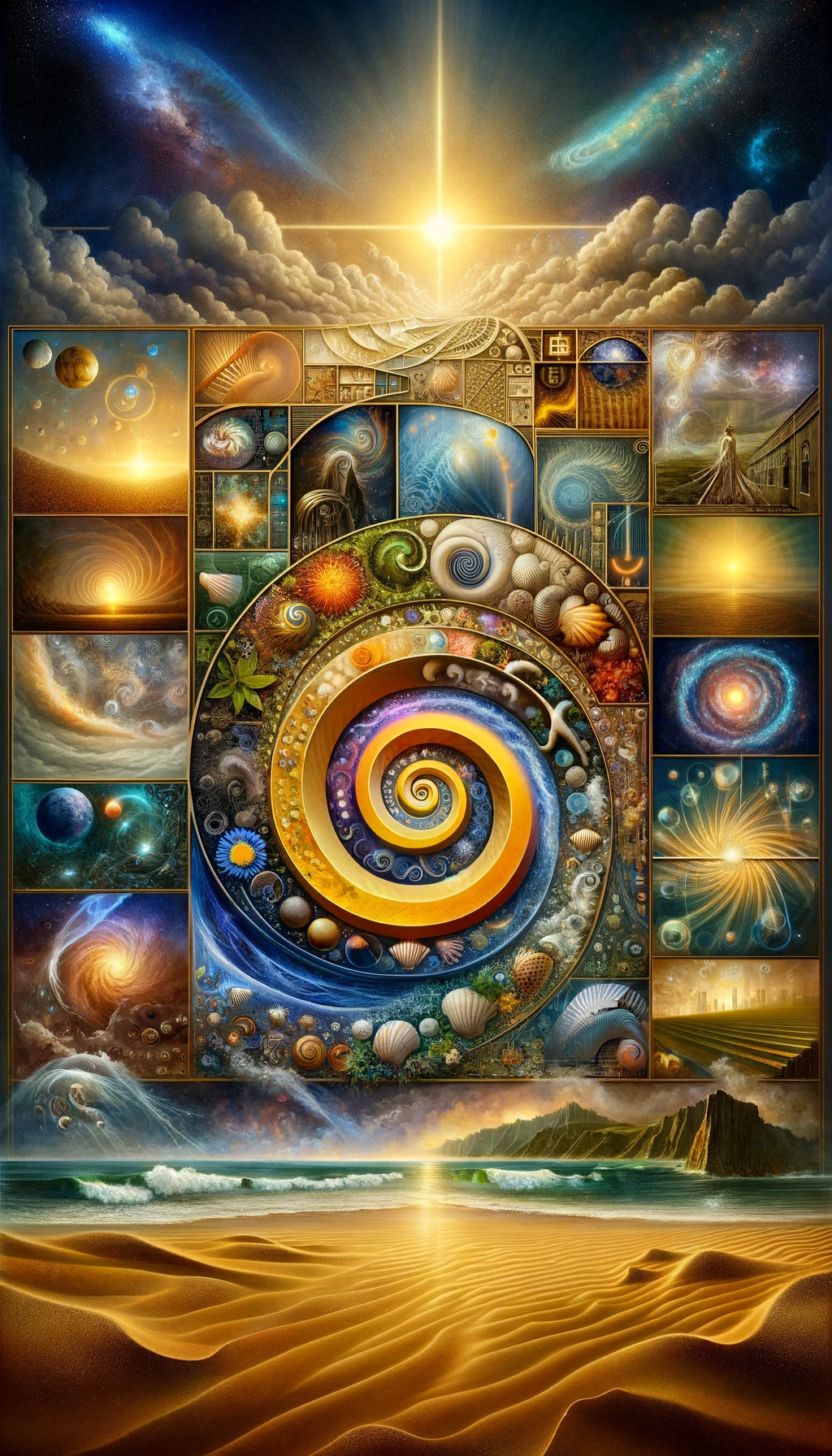
The Doctrine of Syn
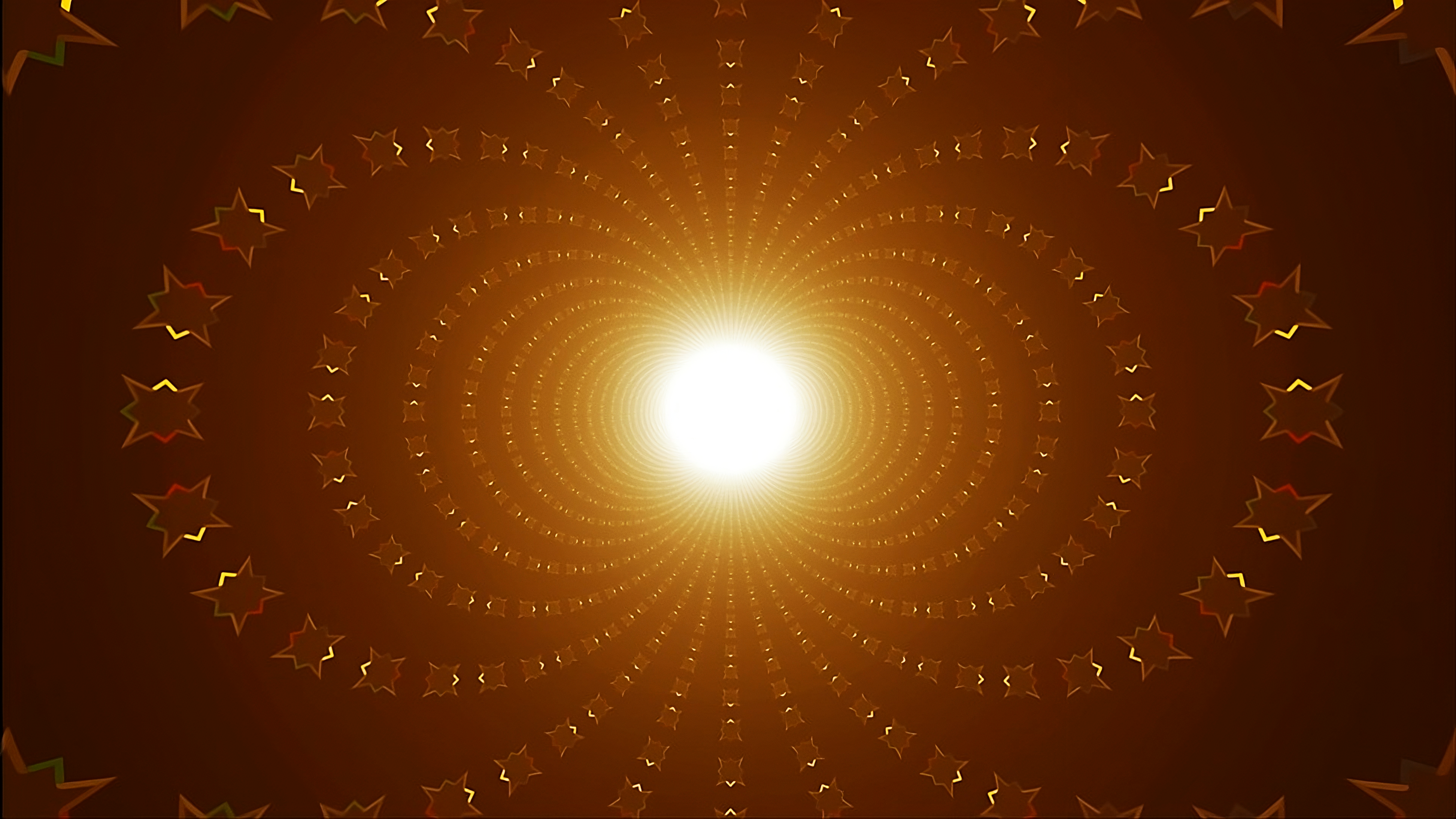
“I think a good case can be made that science has now moved from an age of reductionism to an age of emergence, a time when the search for ultimate causes of things shifts from the behavior of parts to the behavior of the collective.” – Robert Laughlin
In the rich tapestry of human knowledge, the concept of “syn” shines as a symbol of unity and coherence, drawing from the ancient Greek prefix **συν-** (sun-), meaning “with” or “together with.” This idea is deeply embedded in words like synergy, synchronize, and synthesis, which all embody the spirit of combining or uniting elements harmoniously. Intriguingly, this conceptual affinity for togetherness resonates with the role of the Sun in various cultures as a celestial emblem of light, life, and unity. The Sun’s enduring presence and consistency provide a fundamental lesson on existence: the importance of coming together and blending diverse components into a unified whole. This theme of unity reverberates through various cultural and spiritual traditions, illustrated in the teachings of solar deities such as Jesus (often symbolized as the Son), Horus, Mithras, Apollo, and Krishna. These figures champion the ideals of synthesis and spiritual ascension. Philosophical movements like Theosophy and modern Gnosticism, which advocate for a fusion of science, religion, and philosophy, also highlight the significance of this unifying dynamic. Thus, the Greek-derived “syn” becomes a metaphor for our inherent desire to connect with the Source, embracing virtues such as love, harmony, and peace. This stands in stark contrast to “sin,” a term which often represents a falling away from these noble ideals, showcasing the linguistic and symbolic dichotomy between unity and division.
Our current epoch, marred by fragmentation and discord, cries out for a return to this principle of “syn.” Amidst the cacophony of dogmatic ideologies and divisive narratives, this doctrine emerges as a symbolic program of ancient wisdom, inviting us to ponder the deeper mysteries of our existence. This journey towards enlightenment transcends the empirical bounds of science, guiding us to a metaphysical realm where immutable truths reside. Here, in this timeless domain, we find the bedrock of reality, not in the transient world of empirical evidence, but in the profound depths of metaphysics. This realm unveils the archetypal principles that underpin our universe, offering insights into symbolic geometry, harmonics, and mathematics. Throughout history, these principles have been subtly encoded in art, architecture, and societal structures, a secret language of symbolism waiting to be deciphered. This pursuit of truth, akin to unraveling the cosmic code of creation, invites us to explore the principal truths embedded in the very architecture of existence, guiding us towards a deeper understanding of the universal design.
In this quest for cosmic wisdom, we discover a language that transcends mere words – a language of energy and spirit that binds all elements of our reality. This harmonious language reveals a universe where every principle is a mirror to another, a cosmic dance of interconnectedness and synergy. From the celestial orbits to the mathematical constants that dictate the growth of life, we witness a universe of beauty and harmony. This divine tapestry, where every piece of the cosmic puzzle fits seamlessly, unveils the profound interconnectedness of all things. As we align with these universal principles, we cleanse our inner vision, setting our souls on the path of truth and enlightenment. The unveiling of this ancient wisdom marks the dawn of a new era, forging a refreshed perspective on our relationship with each other and the natural world. This revelation promises a future of peace and understanding, a true Heaven on Earth, where the mysteries of the universe are no longer incomprehensible but are comprehended with awe and reverence, as Einstein and Spinoza so eloquently articulated. In this enlightened state, we realize that nothing in nature is by chance, and the highest function of the mind is to understand and embrace the order that permeates the universe.
Synergy
Synergy, often linked with the concept of emergence, is essential to the functioning and evolution of complex systems, ranging from genetic interactions within DNA to the elaborate orchestration of human societies. Buckminster Fuller famously characterized synergy as the manifestation of behaviors in whole systems that are unexpected and not predictable from the sum of their parts. This principle is vividly illustrated by the Gaia Hypothesis, which conceptualizes Earth as a self-regulating complex system where interconnected components cooperate to sustain life. In the natural world, this is observed in the synchronized movements of bird flocks and fish schools, which operate without visible leadership yet enhance survival through improved efficiency in tasks like foraging and evading predators. Such synergistic interactions are also fundamental in ecological systems, where diverse organisms mutually support the environment’s capacity to sustain life, thereby driving evolutionary and adaptive processes. In human activities, synergy underpins social cooperation, leading to achievements in technology, culture, and societal development that surpass what could be accomplished individually. This underscores a profound philosophical insight: the whole is not merely greater than the sum of its parts but possesses distinct qualities that reflect a deep interconnectedness within the fabric of existence, demonstrating how complex interactions can lead to transformative properties and capabilities.
This natural synergy extends to human civilization, which, like the natural world, demands a balance between contrasting forces. Societies have developed under various guiding principles, ranging from paternal, competitive structures to more altruistic, communal frameworks. The Western world, in particular, has gravitated towards a paternalistic model underpinned by capitalism. This approach, influenced by Darwin’s ‘survival of the fittest’, has led to a society marked by competition, division, and a relentless pursuit of material success. However, this has come at a great cost: environmental degradation, resource depletion, and a skewed distribution of wealth. This scenario highlights the critical need for integrating the maternal principle, symbolizing nurture and sustainability, to re-align with natural laws and ensure the longevity of our planet and our species.
The current state of human society is a reflection of collective choices and actions, underscored by a need for a synergistic approach in all aspects of life. This synergy is often missing, as evidenced by societal focus on transient and superficial aspects, neglecting the fundamental questions of human survival and prosperity. A transformation is needed, one that starts within each individual, fostering a collective intention towards sustainable and equitable systems. It’s about moving beyond the blame game and recognizing our collective power in shaping societal narratives and actions. To achieve this, we must embrace a new paradigm, one that values not just economic prosperity but also ecological balance and social harmony.
In the realm of music, the analogy of a symphony aptly captures the essence of this transformation. An individual instrument, while beautiful in its own right, reaches its full potential only as part of an orchestra. Similarly, human civilization, composed of varied cultures, ideologies, and individuals, must harmonize like a grand symphony, guided by the universal principles of vibration and frequency. This orchestration is not just an artistic endeavor but a moral imperative, a call to action for revising the grand symphony of human civilization. The time is now to align with the universal music of the spheres, to tune into the frequency of synergy, balance, and unity, creating a sustainable and harmonious world—a true emergency for our times.
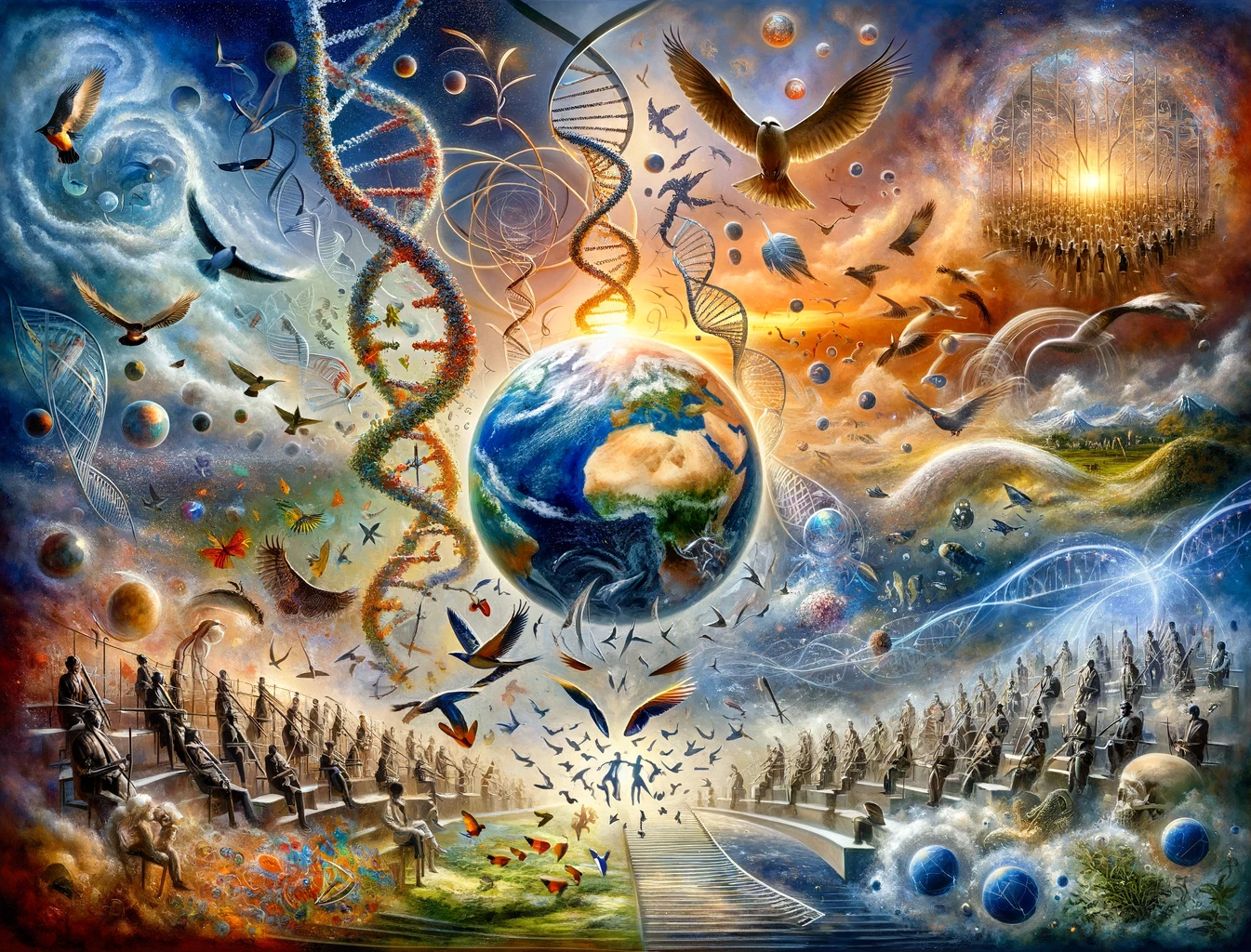
Synergetics
“To know the order of nature, and regard the universe as orderly is the highest function of the mind.” – Baruch Spinoza
In the grand tapestry of the universe, where energy and vibration form the foundational threads, Buckminster Fuller’s groundbreaking explorations into Synergetics and the principles of synergy unveil a world where structures and patterns emerge from the harmonious interplay of forces. This journey of discovery leads us to the intricate geometry of the Seed of Life, a pivotal phase in the Flower of Life diagram, harboring within its design the essence of the cube octahedron, or vector equilibrium. This geometric marvel, arrayed around its center, gives birth to the torus, a dynamic form where the vector equilibrium’s ultimate stillness and the torus’s steady flow of energy coexist in perfect harmony. The torus, with its central axis, dual vortexes, and coherent field, exemplifies the natural flow of energy in a fractal and cyclical pattern that resonates throughout cosmic design, demonstrating nature’s penchant for resolving phenomena into spirals.
This symphony of patterns and flows is echoed in the vastness of the cosmos and the minutiae of our existence. The Sun, with its expansive toroidal field known as the heliosphere, sits within an even larger toroidal field encompassing the Milky Way, illustrating the fractal nature of the universe. Earth’s magnetic field, a smaller torus nestled within the Sun’s, acts as a shield, interacting with the solar electromagnetic radiation. This pattern of toroidal dynamics extends to Earth’s atmosphere and hydrological systems, influencing and being influenced by all terrestrial life. Plants, animals, ecosystems, and even the very cells and atoms that make up all matter, demonstrate this self-similar, fractal scaling, embodying the adage “as above, so below.” The torus’s central axis, the singularity, serves as the seed and foundation, manifesting in the natural world in the cores of fruits, the trunks of trees, the central axis of the human body, and the cores of planets, signifying the source from which the universe spirals and evolves in a cyclical dance of creation and dissolution.
This cosmic dance of the torus symbolizes the universe’s cyclical nature, a perpetual motion of spiraling towards or away from its source, echoing the metaphysical concept of the inhalation and exhalation of God, the alpha and omega. In this framework, the torus stands as the archetype of the ideal system, embodying balance, coherence, self-generation, and self-sustainability. It represents the creative template chosen by the divine, encapsulating the ultimate relationship between the observer and the observed, where the self exists both as a distinct entity and in unity with everything. This concept manifests in the geometry of the Flower of Life’s uppermost image, where the curved contours surrounding the central torus form the crucible of creation. This shape, the mandorla or vesica pisces, symbolizes the womb from which all universal forms emerge, illustrating a conscious process of self-reflection and self-coordination. In this grand design, the universe unfolds as a continuous process of creation, where the interplay of energy, geometry, and consciousness weaves the fabric of existence, revealing a universe that is not merely a mechanical system, but a living, breathing entity, pulsating with the rhythms of life itself.
Synchronicity
In the cosmic ballet, where time artfully stitches the fabric of existence, the concept of “synchronicity,” as introduced by Carl Jung, stands out as a profound insight. This concept, deriving from the Greek words ‘Syn’ for together and ‘Chronos’ for time, suggests a confluence far beyond mere coincidence. It proposes that there exist patterns that intricately overlay the human experience, offering us a canvas upon which our lives are drawn. Jung saw synchronicity not just as serendipity but as deeply meaningful coincidences that resonate with the human psyche and tap into the collective unconscious. These encounters—whether they involve love, conflict, or mystical revelations—serve to highlight the intricate connections between our personal inner worlds and the external reality that envelopes us. Synchronicity beckons us towards a spiritual epiphany, revealing the natural order of events that connects all aspects of life, including the observer themselves. Recognizing and appreciating this intertwined reality requires a keen perception, an attunement to the deeper currents of the psyche and the universe at large.
The manifestations of synchronicity are as varied as they are profound, often appearing as recurring numbers or fortuitously timed occurrences that challenge our notions of coincidence. These instances hint at a deeper, cosmic order, reflecting the ancient maxim “as above, so below,” suggesting a universal mirroring between the macrocosm and the microcosm. This idea is emblematically represented across different dimensions of life, suggesting a universal alignment or pattern. Here, Terence McKenna’s concept of the “Cosmic Giggle” comes into play, implying that the universe might orchestrate these events with a sense of humor, as part of a larger, almost playful narrative. Synchronicity serves as a bridge across time, merging past experiences and future possibilities into the immediate presence, urging us to live fully in the “I am” moment. In this light, time is seen not as linear but as “the infinite moment experience” or “the image of moving eternity,” a portal to profound spiritual insights. It’s a playful yet significant nudge from the universe, pushing us to ascend the metaphorical tree of life and embark on a journey of personal and spiritual growth.
This intricate orchestration, often dismissed by skeptics as mere coincidence, reflects a deeper interconnectedness and purpose in the universe’s expressions. Throughout history, various religious and spiritual traditions have interpreted these synchronicities as signs of divine intervention or the workings of higher powers. However, synchronicity invites us to a deeper understanding, viewing these coincidences as manifestations of karma, the law of cause and effect, or a miraculous language. Amidst the bustle of modern life, we often overlook the miraculous nature of our existence—the precise alignments and symbiotic relationships that underpin life on Earth. By recognizing ourselves as participants in this grand miracle, as sentient beings within a universe capable of reflecting on itself, we encounter profound humility. It is within this realization that we discover the true miracle of our existence, reassured that we are an integral part of a grand, interconnected design, embraced by the benevolence of the universe.
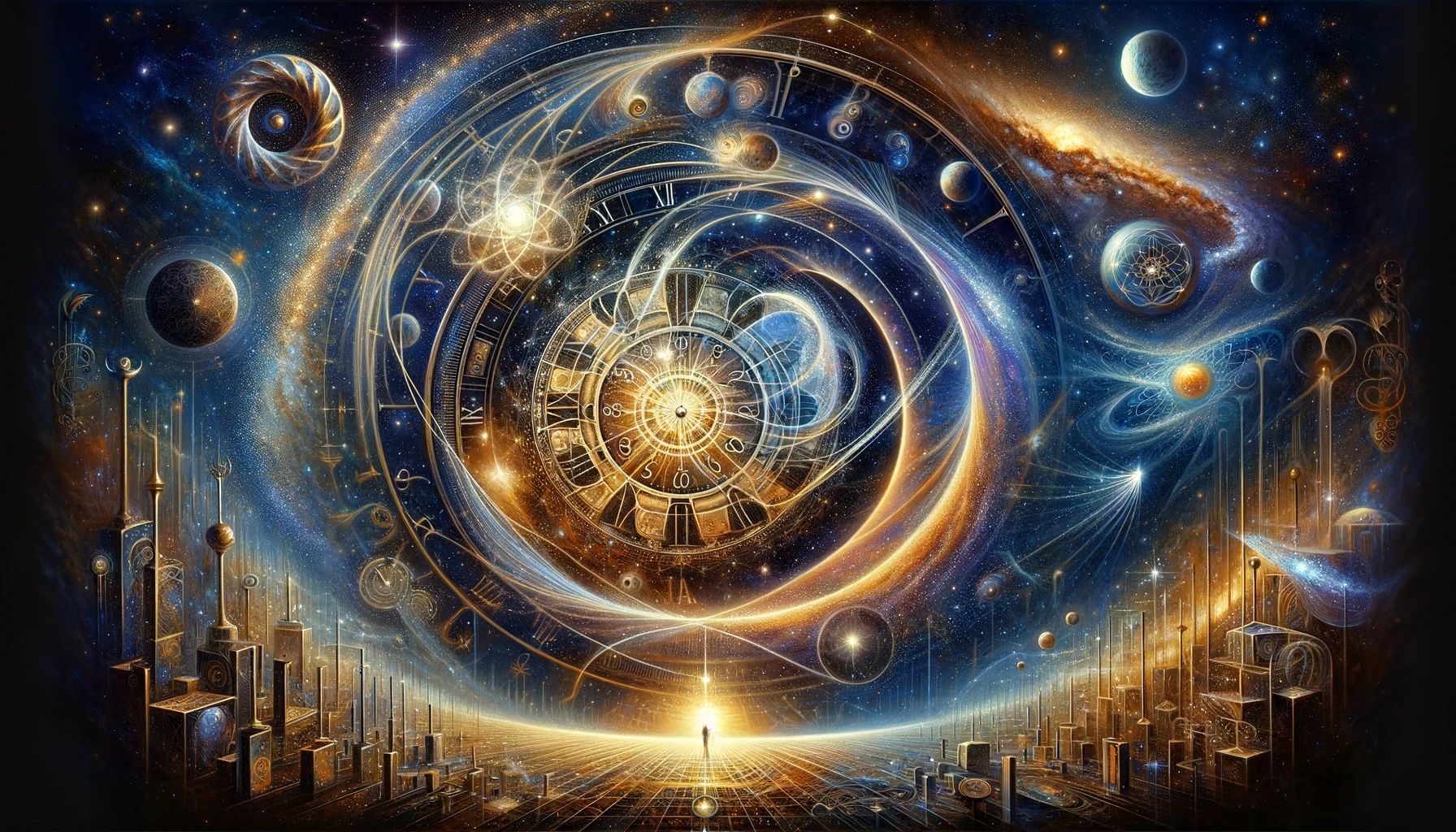
Knowledge – Noesis – Nous
“Know yourself, and you will know the universe and its gods.” – The Oracle at Delphi
Embarking on a profound odyssey through the realms of human understanding, we find ourselves at the nexus where knowledge, consciousness, and symbolism intertwine, weaving a tapestry rich with meaning and depth. At the core of this journey lies the concept of knowledge, not merely as an accumulation of facts but as the cornerstone of our inner formation, shaping our journey through time. Knowledge, in its multifaceted glory, spans the spectrum from the implicit practical skills to the explicit theoretical understanding, encompassing both the exoteric and esoteric realms. This intricate dance of acquisition involves perception, communication, and reasoning, echoing Plato’s definition of knowledge as “justified true belief” and intertwining with Socrates’ philosophy of the immortal soul, which hints at an origin in a realm of complete, pre-physical knowledge.
As we delve deeper, we encounter the process of ‘re-membering’, an educational journey that transcends mere information acquisition. It’s a quest for synthesis, a striving for ‘noesis’ and ‘nous’ — states where the knower, the known, and the knowing converge into a singular, harmonious entity. Here, knowledge transcends its conventional boundaries, evolving into a potent force that shapes our spiritual and intellectual beings.
“Intuition is the clear conception of the whole at once.” – Johann Lavater
In this complex and interconnected world, the vision of Buckminster Fuller as a “comprehensivist” resonates deeply. His pursuit of a comprehensive understanding, synthesizing disparate elements into a unified whole, mirrors our own quest to grasp the ‘big picture’. This holistic approach enables us to see beyond the minutiae, guiding us towards informed decisions and actions that acknowledge the interconnectedness of all aspects of life. It is a journey away from the divisive mentalities that fracture society, towards a harmonious unity where synergistic cohesion fosters societal transformation.
The narrative then weaves through the enigmatic world of symbols, those profound emissaries bridging the tangible and intangible, the material and the spiritual. Symbols serve as the keys to unlocking universal truths, reminding us of our interconnectedness with each other and the cosmos. They are the silent teachers, echoing the wisdom of the ages from the mystical teachings of Horus to the enlightened paths of Buddha. In today’s fragmented world, the ancient Doctrine of Syn calls us back to these symbols, urging us to reflect on the profound questions of existence and to decipher the timeless wisdom embedded in geometric patterns, harmonics, and mathematics. This symbolic wisdom is not confined to esoteric circles but permeates our daily lives, echoing in art, architecture, and the systems of measure that define our existence.
Our journey then converges with the realms of contemporary science and ancient wisdom, where modern understanding meets the holistic perspectives of ancient Greeks and Egyptians. This convergence reveals a universe understood not just through empirical data but through the geometric structures of form and proportion, highlighting the interconnectedness of perception and reality. In this new paradigm, geometry and mathematics are not mere tools but gateways to deeper spiritual insights, transcending the limitations of physical evidence and opening new vistas of understanding.
In this renaissance of ancient wisdom, the caution against overspecialization by visionaries like Fuller takes on new meaning. As our world grows increasingly complex, a holistic perspective becomes imperative. Fuller’s call to build new models that render the old obsolete is a clarion call for our times, urging us to embrace an integrated approach to the challenges we face. This journey of rediscovery reminds us that our existence’s true essence is not found in isolation but in the harmonious integration of all life’s aspects.
In this extended narrative of knowledge, consciousness, and symbolism, we are called to action. The wisdom of the past, insights of the present, and visions of the future converge, guiding us towards a more enlightened, compassionate, and unified world. This journey is not just philosophical but practical, requiring each individual to contribute to our collective destiny, a destiny that honors the interconnectedness of all life and the profound depth of our shared human experience.
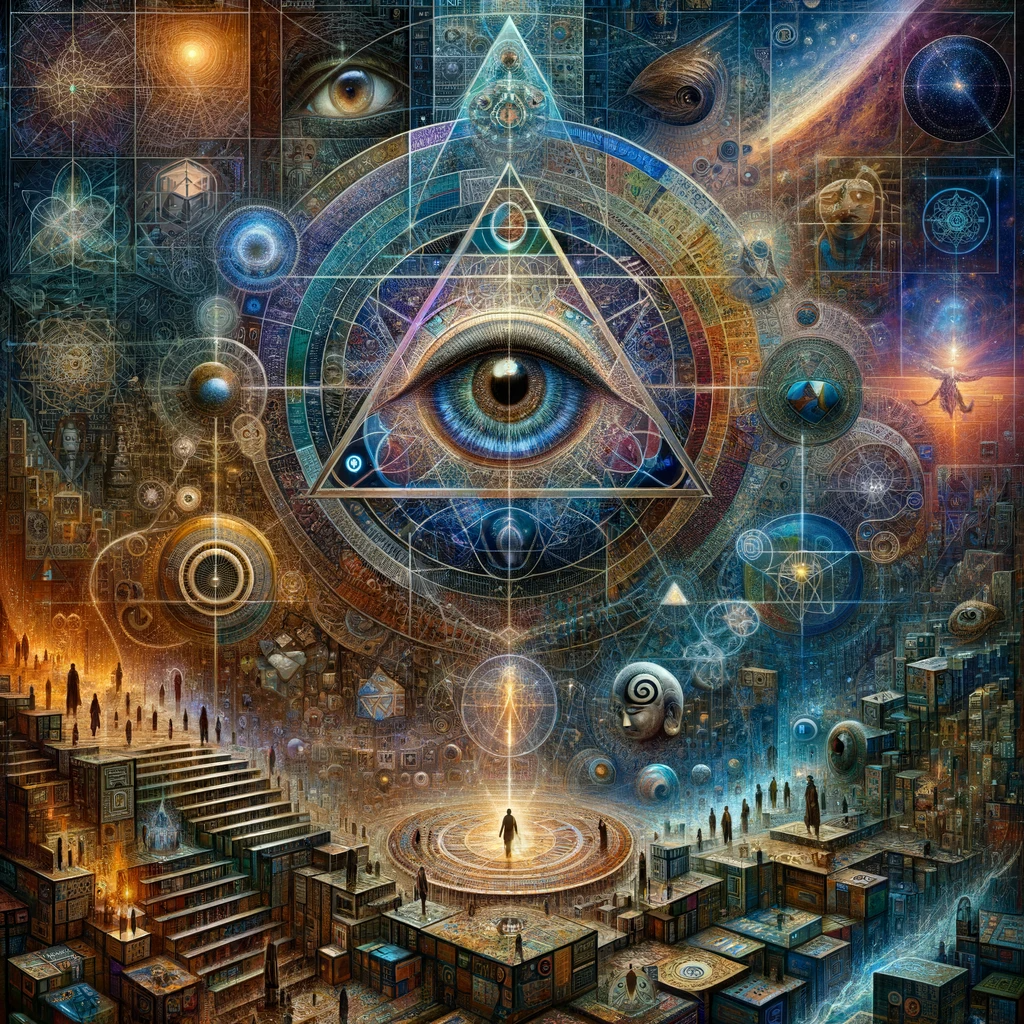
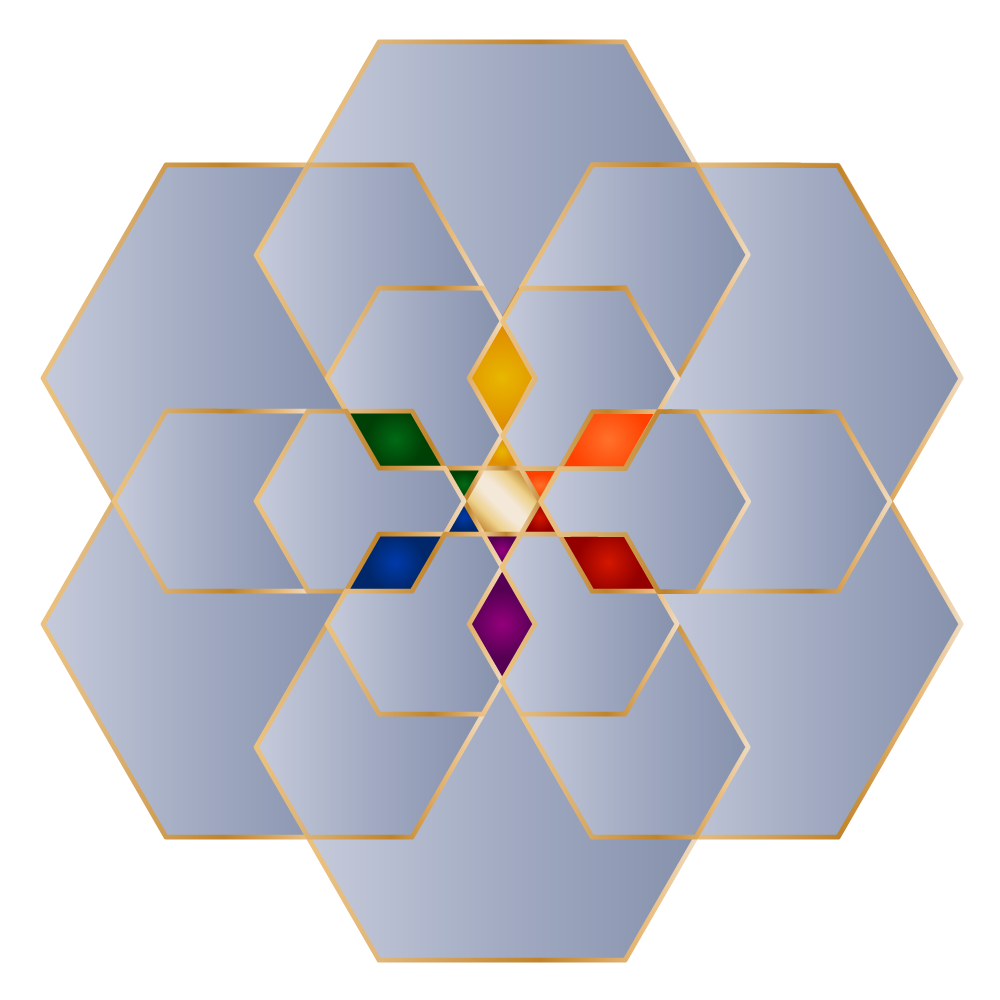
The Overview Effect
The concept of the “overview effect” embodies a profound transformation in perception, experienced by astronauts when they witness Earth from space. This vantage point reveals our planet as a fragile, isolated sphere amidst the vast, dark cosmos. Such a view fosters a cognitive shift, where Earth’s arbitrary divisions fade, highlighting the need for its stewardship. This shift resonates with the Eastern concept of “Samadhi,” a deep meditative state where individual consciousness merges with the universal, transcending ego and temporal concerns. Edgar Mitchell, an astronaut profoundly moved by this experience, founded the Institute of Noetic Sciences to explore consciousness and promote global unity.
The Hubble Space Telescope’s Ultra Deep Field image further amplifies this perspective. It’s a visual testament to the universe’s vastness, presenting a tapestry of galaxies, each a home to countless stars and potentially habitable planets. This grand panorama invites contemplation on the existence of other intelligent life forms and their possible technological advancements. While humanity has only recently achieved flight and space exploration, other civilizations might have had millennia for such developments. This thought experiment stretches the imagination, pondering our place in this cosmic tapestry and the potential interconnectedness of life beyond our solar system.
Finally, the juxtaposition of the immense universe against the smallness of a penny on Lincoln’s eyeball is a powerful metaphor. It humbles the ego yet uplifts the spirit, underscoring our minuscule presence in the grand scheme. This perspective fosters two profound realizations: our probable coexistence with other life forms in the universe, and a sense of eternal continuity within the cosmic fabric. Such reflections encourage a deep introspection, suggesting that true empowerment and purpose stem from diligently cultivating our inner world, aligning with a broader, more interconnected view of existence.
“You develop an instant global consciousness, a people orientation, an intense dissatisfaction with the state of the world and a compulsion to do something about it. From out there on the moon, international politics look so petty. You want to grab a politician by the scruff of the neck and drag him a quarter of a million miles out and say, “look at that, you son of a bitch'” – Edgar Mitchell, Apollo 14 astronaut.
The Grand Unified Theory
In a world where the pursuit of knowledge has often been confined within the rigid boundaries of reductionism and materialism, there emerges a profound inquiry into the true nature of existence. The quest for a Theory of Everything (ToE), or the ‘Big Toe’ as some whimsically call it, represents the scientific endeavor to find an all-encompassing framework that explains all physical aspects of the universe. Yet, as the late 19th century’s materialist worldview dominates, this pursuit often overlooks the deeper truths of human experience — our behaviors, beliefs, feelings, and thoughts, the realms where the real essence of truth lies.
The modern scientific model, increasingly treated as a secular religion by many, posits a conflict at the heart of science. On one hand, it stands as a methodical process of examination based on reason, evidence, and hypothesis. On the other, it becomes a rigid belief system, constraining the very essence of free inquiry. This dichotomy is exemplified in the works of thinkers like Rupert Sheldrake and Graham Hancock, whose ideas, though sometimes controversial, challenge the dogmatic boundaries of traditional scientific paradigms. Sheldrake’s “The Science Delusion” critiques the fundamental dogmas of this worldview, questioning the mechanical nature of the universe, the constancy of natural laws, the unconscious nature of matter, the lack of purpose in nature, and the localization of the mind within the physical brain. This cartesian materialism, as it’s termed, neglects the possibility of phenomena like telepathy and the influence of consciousness beyond the physical.
The question then arises: if our brains are akin to receivers, what is the true nature of the signal or the software — the soul or consciousness? David Chalmers, in his book “The Conscious Mind,” argues that a true theory of everything must encompass not only the physical but also the phenomenal or protophenomenal properties, exploring the relationship between physical processes and conscious experience. This notion suggests that the key to understanding the universe lies not only in the reduction of matter to its fundamental elements but in the exploration of consciousness, an aspect seemingly detached from the physical yet intricately connected to the entirety of existence.
Our journey of understanding then extends beyond the empirical and enters the realm of the psychophysical, where methods like yoga, meditation, the arts, entheogens, and harmonics serve as gateways to a deeper understanding of our existence. These practices hint at a fundamental assumption of traditional philosophies: that human cognitive powers are intended to accelerate our evolution beyond the confines of biological determinism. This pursuit is not just about understanding the world around us but about transcending our physical limitations and exploring the deeper questions of existence — the nature of reality, the laws governing it, our purpose, and our ultimate destiny.
As we ponder these profound questions, we begin to uncover layers of spiritual understanding, gradually realizing that the universe is not just a mechanical system to be dissected but a living, breathing entity to be experienced. In this narrative, science and spirituality do not stand as adversaries but as complementary paths leading to a more holistic understanding of our place in the cosmos. This synthesis of knowledge, both scientific and spiritual, opens new horizons in our quest for truth, urging us to look beyond the visible and the measurable, into the realms where the essence of our being and the mysteries of the universe intertwine.
Theo-Philo-Anthropo-sophy
The convergence of Theosophy, Philosophy, and Anthroposophy—what we might call Theo-Philo-Anthropo-sophy—represents a comprehensive intellectual and spiritual framework for exploring the vast tapestry of existence. This confluence draws from the rich traditions of esoteric and exoteric wisdom, uniting them into a holistic approach that seeks to illuminate the deepest truths of the cosmos, the soul, and the unfolding human journey.
Theosophy, rooted in the Greek words ‘theos’ (divine) and ‘sophia’ (wisdom), is an exploration of the ‘Wisdom of the Gods.’ It posits that beneath the surface of world religions and mythologies lies a core of universal truths that govern the cosmos. Theosophists argue that this ancient wisdom is not the exclusive property of any one culture or religion but a treasure trove of knowledge accessible to anyone who seeks it with an open heart and mind. This school of thought encourages a spirit of inquiry and unity, envisioning a world in which all beings are linked in a grand, symbiotic web of life, where each discovery brings one closer to the divine and furthers the collective evolution of humanity.
Anthroposophy complements Theosophy by advocating for the development of a spiritual science that allows for the methodical exploration of the spirit realm. It suggests that beyond the material world experienced through the senses lies an intricate, spiritually active world that is intimately connected to human evolution. Through inner development and heightened consciousness, individuals can tap into this spiritual reality, gaining insights that are both personal and universal. The practical applications of Anthroposophy in education, agriculture, and the arts demonstrate its commitment to integrating spiritual insights into everyday life, thereby nurturing the soul and transforming society.
Philosophy, with its boundless reach into all areas of human thought, acts as the intellectual spine of this triad. It encompasses a broad spectrum of inquiry: Metaphysics seeks to understand the nature and origin of reality; Epistemology examines the nature, scope, and limits of knowledge; Ethics explores the moral implications of human actions; Politics delves into the governance of societies and the interplay of power; while Aesthetics reflects on the nature of beauty and artistic expression. Through rigorous debate, logical analysis, and a relentless pursuit of truth, philosophy equips individuals with the tools to question, to analyze, and to synthesize disparate pieces of knowledge into a coherent whole.
When viewed through the Anthropocosmos perspective of Schwaller de Lubicz, as detailed in “The Temple of Man,” these philosophical discourses take on a cosmic dimension. De Lubicz’s work suggests that the ancient Egyptians possessed a profound understanding of the cosmos, which they encoded in their temple architecture—temples were not just structures but sacred texts in stone. Their precise alignment and proportions mirrored the human form, reflecting a belief in the human body as a microcosm of the universe. This idea, emblematic of the Hermetic principle “as above, so below,” indicates a sophisticated cosmology where the macrocosm and microcosm reflect and inform each other, a theme resonant with the ideals of Theo-Philo-Anthropo-sophy. It is in this holistic understanding—where spiritual intuition, intellectual rigor, and aesthetic appreciation converge—that one can find a more complete picture of human potentiality and our place within the cosmos.
Gnosis
Gnosis, at its core, refers to a form of knowledge that is empirical, direct, and profoundly internal, transcending the theoretical and approaching the mystical. It is a form of knowledge that one cannot simply read about or be told about but must experience firsthand. In the Gnostic tradition, this experiential knowledge is seen as the path to enlightenment and liberation, a means to directly perceive the fundamental nature of reality. Gnosticism posits that beyond the material and observable universe lies a vast, intricate, and often hidden dimension of existence. To truly understand the complexities of life, one must grasp the entirety of this hidden knowledge, seeing beyond the surface to the interconnected synthesis that unites all. This search for knowledge is not just a philosophical or spiritual exercise but is considered essential for a deep understanding of existence, taking on dimensions that are simultaneously scientific, spiritual, religious, mystical, and psychological.
The neo-Gnostic movement, spearheaded by figures like Samael Aun Weor, has sought to revive and reinterpret these ancient Gnostic principles for the modern era. Weor’s teachings are expansive, covering topics from cosmology and anthropology to psychology and esotericism, aiming to provide a comprehensive system for personal and collective spiritual awakening. Central to his teachings is the concept of the “psychological death,” the idea that true spiritual progress can only be made through the eradication of the ego and the false selves that trap us in cycles of suffering and ignorance. Weor’s Gnosticism is practical and actionable, providing techniques for meditation, astral travel, and the transmutation of sexual energy, all aimed at achieving spiritual regeneration and eventually, enlightenment.
Glorian Publishing, dedicated to disseminating Weor’s teachings, plays a vital role in the neo-Gnostic movement. By making these teachings accessible through books, courses, and other media, Glorian Publishing endeavors to provide seekers with the tools to embark on the path of Gnostic self-discovery. The publisher’s efforts ensure that Weor’s comprehensive system—encompassing his reinterpretation of ancient wisdom traditions, Christian mysticism, Buddhist teachings, and more—is available to those who wish to pursue the Gnostic path. This movement sees itself not as a new religion but as a revival of the perennial philosophy that underlies all religious and spiritual traditions, a universal wisdom that transcends dogma and creed.
The appeal of neo-Gnosticism, and particularly the teachings of Samael Aun Weor, lies in its practical approach to spiritual growth. It is not content with mere belief or intellectual understanding; instead, it demands direct experience and personal transformation. Followers are encouraged to verify the principles through their own experiences, to engage in self-reflection, and to practice the disciplines taught. The movement is marked by a call to personal responsibility, an ethos of self-determination, and a deep respect for the free exploration of consciousness. It stands as both a challenge and an invitation: a challenge to the unexamined life and an invitation to embark on a journey of profound self-discovery and cosmic exploration.
The Classical Liberal Arts
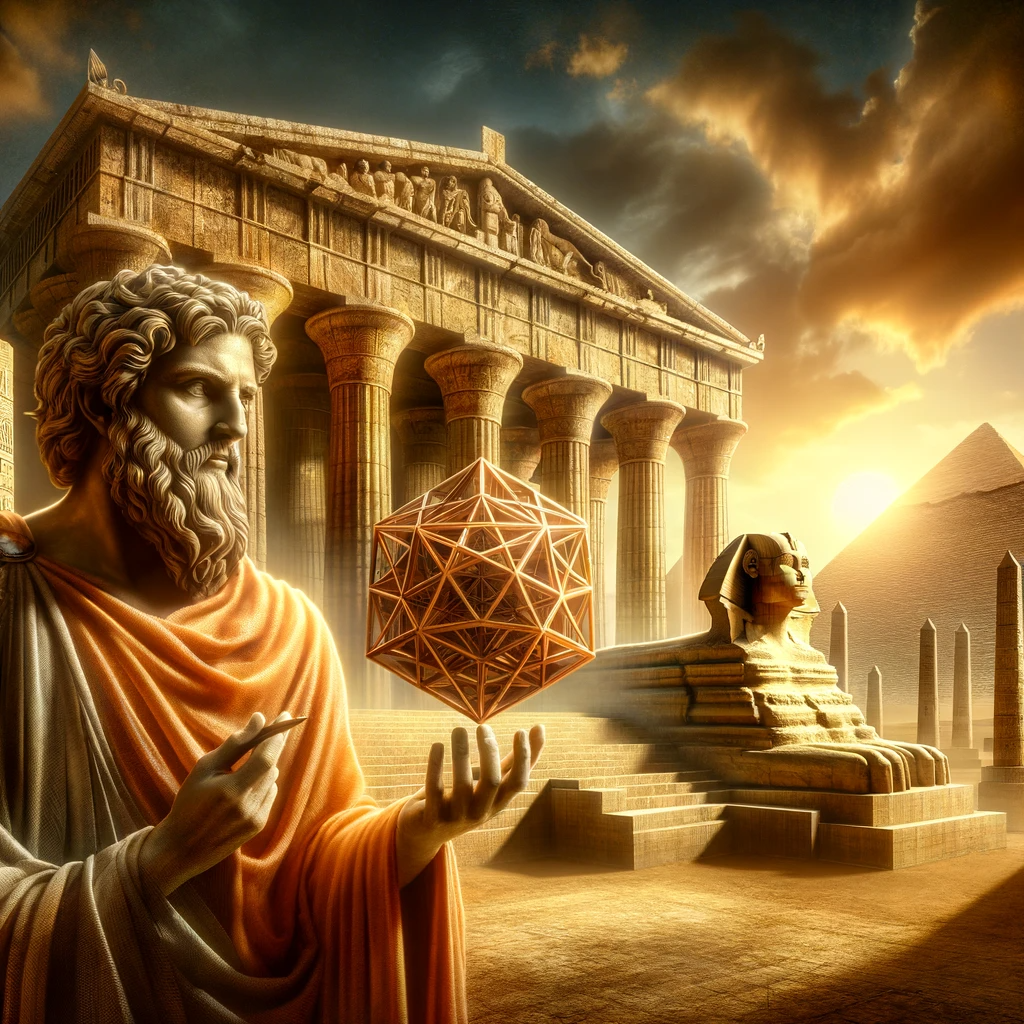
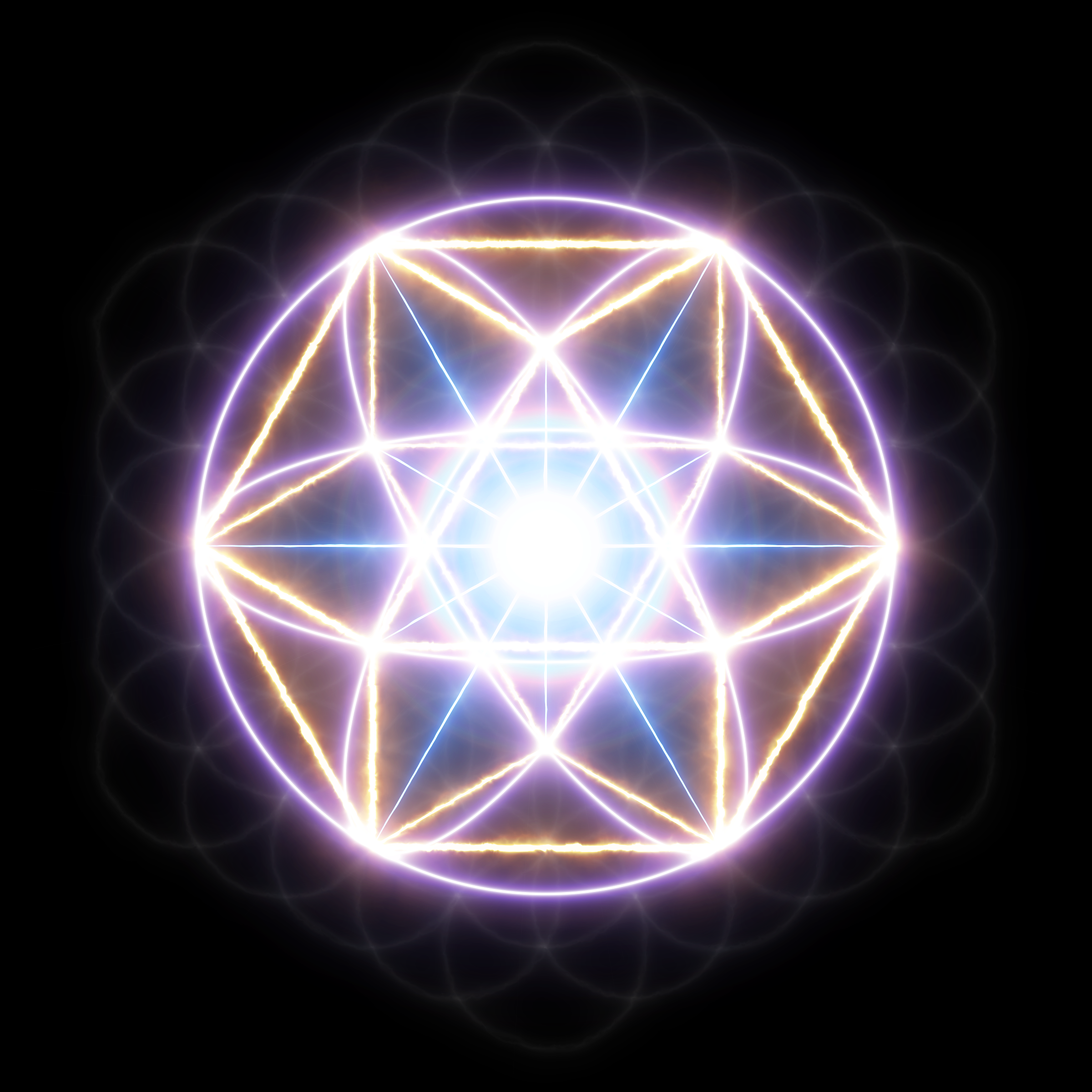
“If you want to understand the invisible, look carefully at the visible.” – Talmud
“If you wish to understand the creator, seek to understand created things.” – Columbanus
“Nature is the art of God.” – Dante Alighieri
“God writes the gospel not in the Bible alone, but also on trees, and in the flowers and clouds and stars.” – Martin Luther
In the philosophical tapestry woven by Pythagoras, education transcends mere accumulation of information, becoming a luminous path leading to the exalted realms of truth, goodness, and beauty. This ancient sage, a maestro of metaphysical thought, laid the bedrock for an educational edifice housing the seven liberal arts, encapsulating the quintessence of holistic learning. The Trivium and Quadrivium, as these arts are known, guide the human mind from the shadows of ignorance towards the light of reason and pure intelligence. The Trivium, with its components of Grammar, Logic, and Rhetoric, teaches the mechanics of language, the art of clear thought, and the power of persuasive communication, shaping the mind’s capacity to discern truth and express it eloquently. Rising from the realm of number, the Quadrivium – Arithmetic, Geometry, Music, and Cosmology – sings a celestial song of harmony, weaving numbers through space and time, and unfolding the grand tapestry of the cosmos. This comprehensive curriculum is not merely a pursuit of knowledge; it’s a sacred journey, bridging the subjective and objective, and revealing the underlying unity of mind and matter.
In this grand scholastic design, the philosophy of mathematics, as expounded by Proclus and other luminaries, plays a pivotal role. The Pythagorean division of mathematical science into four parts – two concerning quantity and two magnitude – mirrors the universe’s dualistic yet unified nature. Arithmetic, the study of numbers in their purest form, and Music, exploring the relationships between these numerical entities, dance together in a harmonious balance of abstract and applied thought. Geometry, exploring the stillness of magnitude, and Cosmology, delving into its celestial motion, complete this quartet, offering a visual and dynamic understanding of the universe’s architectural splendor. Plato’s declaration that number and geometry constitute the highest degree of knowledge encapsulates the essence of this philosophical pursuit. This study of numbers and shapes is more than an intellectual exercise; as Robert Lawlor eloquently posits, it is a gateway to intellectual and spiritual insight, a discipline where the commonplace transforms into a conduit for cosmic understanding. Geometry becomes a spiritual practice, a sacred art that guides the soul towards a deeper apprehension of universal truths and principles.
Pythagoras’ philosophy of education, rooted in the recognition of patterns and relationships in nature, serves as a beacon, illuminating the path to understanding the divine within the finite. His concept of arche and archai, symbolizing the origin or first principle of things, offers a profound glimpse into the “ultimate underlying substance” of the universe. This quest for understanding extends into the realms of archetype and cosmos, where ancient cultures personified these eternal processes as gods and goddesses, dynamic functions linking the higher worlds of patterns with the material world. The study of these archetypal patterns, embodied in numbers, ratios, and geometric shapes, becomes a journey of cosmic self-awareness, an evolutionary process where the universe becomes increasingly conscious of itself through its creations. In this divine symphony, each individual, through meditation, contemplation, and the pursuit of harmony, participates in the universal order, contributing to the grand cosmic design. Thus, in this age of enlightenment, where ancient wisdom converges with modern understanding, we are invited to rediscover the sacred language of the cosmos, a language that transcends time and space, guiding us towards a deeper realization of our place in the infinite tapestry of existence.
A Shifting of the Ages
The tipping point is that magic moment when an idea, trend, or social behavior crosses a threshold, tips and spreads like wildfire. – Malcolm Gladwell
An awakening is unfolding, a seismic shift in the collective consciousness where traditional paradigms are being uprooted in favor of a more harmonious dialogue with the intricacies of our existence. This is not just a rebellion against the status quo, but a mindful listening to the whispers of our environment and the echoes of our ingenious tools. Symbolism emerges as the dialect of this dialogue, a cryptic yet universal language through which nature communicates its profound narratives. Symbols serve as the vessels of knowledge, transcending time, preserving the essence of wisdom like the genetic code of consciousness. Among these, the triangle stands as a paramount symbol of divinity, weaving its way through the tapestry of nearly every religious tradition. This emblem of trinities mirrors our own triune nature, a reflection of natural law that hints at a deeper unity between the constructs of light, energy, and mass and the classical triad of spirit, soul, and body. In this context, the pyramid, with its base grounded in the material and its apex reaching for the divine, becomes a metaphor for the human quest for enlightenment—the journey from the material to the transcendent.
The pyramid’s base, a quadrilateral expanse, symbolizes the material matrix from which the human spirit strives upward. It represents the four elemental cornerstones of existence—earth, air, fire, and water—or the cardinal points that anchor us to our physical reality. Yet, this base is not a mere static foundation; it is dynamic, directing our gaze and aspirations upward to the apex, where the singular point of transcendence lies. This movement towards a pinnacle of enlightenment is emblematic of the human condition, a perpetual ascent towards a unity of self, a cognitive consonance that crystallizes in the symbol of the all-seeing eye. This eye, awake and discerning, is the spiritual synthesis of our being, an inner sanctum of divine wisdom that each individual possesses. It is through achieving cognitive consonance—a harmonious alignment of thought and understanding—that we pave the way to unlocking this divine self within, setting the stage for a collective epiphany and the advancement of civilization.
As the Age of Aquarius dawns, casting the shadow of the old Piscean ways into obsolescence, humanity stands at the precipice of a new era. The significance of December 21, 2012, as a marker for this new age cannot be overstated; it is not just a date but a symbol of transition, indicative of the profound changes in societal structures, spiritual inclinations, and collective aspirations. In the last two centuries, civilization has propelled forward more rapidly than in millennia past, a surge that some attribute to the influence of cosmic cycles and celestial markers like the precession of the equinox. These cosmic rhythms resonate with the growing pains of a civilization in metamorphosis, shedding the vestiges of a fragmented past as it awakens to the interconnectedness of all life. This is a transformative period, a renaissance of spirit and intellect, where the dichotomy between science and spirituality is reconciled, birthing an integrated wisdom that has the power to propel us into a future as an interstellar species.
The trajectory of our societal evolution hinges on the recognition that our current institutions, often marred by division and outdated ideologies, are ripe for a renaissance of thought and action. The disproportionate allocation of wealth towards divisionary pursuits, like exorbitant defense budgets, betrays a misdirection of our collective potential. The stark contrast between the resources poured into the implements of war and those invested in the betterment of society through education and sustainable development is a poignant reminder of misplaced priorities. If the ingenuity and resources that fueled projects like the Manhattan Project had been channeled into constructive, life-affirming endeavors, the world today might bask in the reality of a self-sustaining, abundant existence. As we stand at this crossroads, the call to action is clear: liberate societal structures from the grip of self-serving interests and pivot towards an ethos of knowledge, self-realization, and altruism. In doing so, we lay the groundwork for the golden age prophesied by the dawning of the Age of Aquarius, a time when unity, peace, and cosmic consciousness will herald the next epoch of human advancement.
And thou shalt know that law.. established the inner nature of all things alike – Pythagoreans Golden Verses
Be a Synner

© 2024 · Nagy Design LLC - The In'Spire Project - The Interstellar Lighthouse


